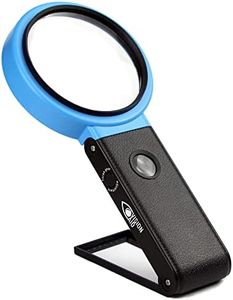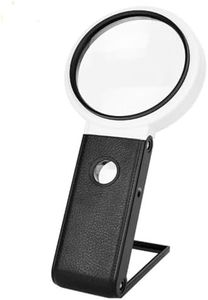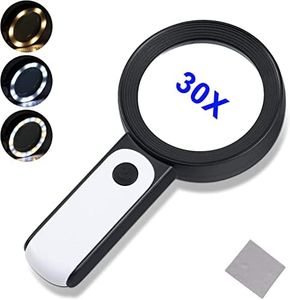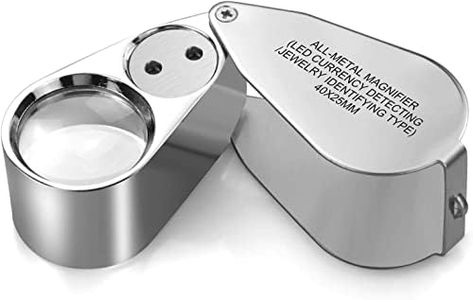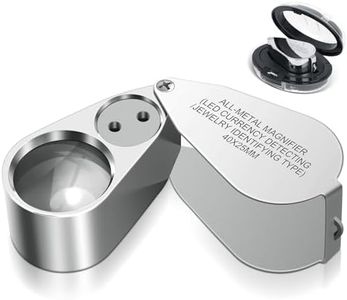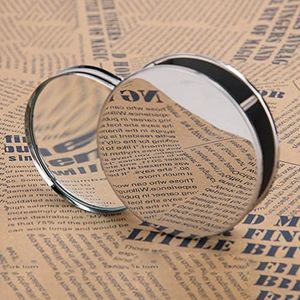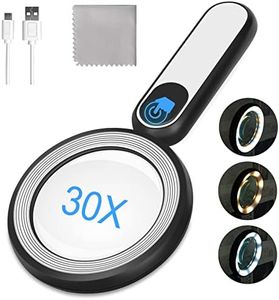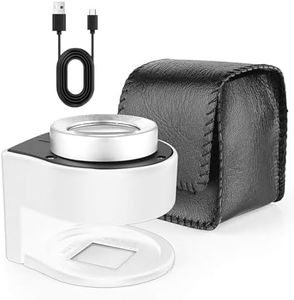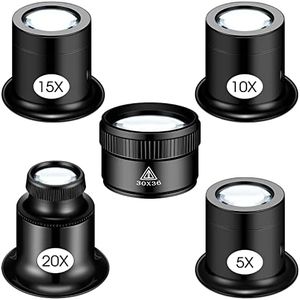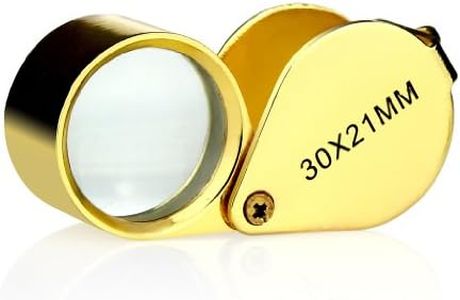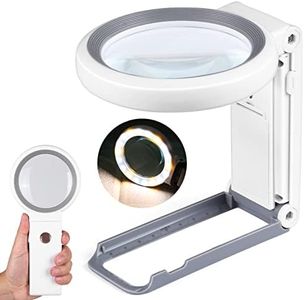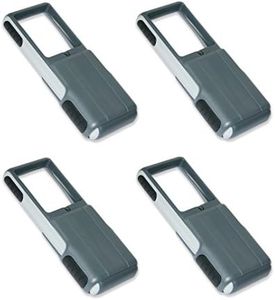We Use CookiesWe use cookies to enhance the security, performance,
functionality and for analytical and promotional activities. By continuing to browse this site you
are agreeing to our privacy policy
10 Best Coin Magnifier
From leading brands and best sellers available on the web.Buying Guide for the Best Coin Magnifier
When buying a coin magnifier, you're looking for a tool that helps you see fine details on coins—like mint markings, flaws, or small engravings—so you can assess their quality and authenticity. The right magnifier depends on how you'll use it: whether you're a casual collector, a serious numismatist, or someone needing detailed inspection for other hobbies. To find your best fit, it's important to focus on the key features that determine how clear, comfortable, and convenient your viewing experience will be.Magnification PowerMagnification power tells you how much larger the magnifier will make the coin appear to your eyes, and it's usually marked as 'x' (like 5x, 10x, or 20x). This is important because more magnification reveals finer details, but at higher levels, the viewing area gets smaller and focus can be harder. For general coin viewing, magnifiers in the 5x to 10x range are comfortable and show lots of detail without too much distortion. If you need to see very tiny features, go for higher magnification, but be prepared for a smaller, sometimes trickier viewing window. It's best to think about how much detail you want to see and pick a magnification that balances clarity and ease of use for your usual coins.
Lens SizeLens size refers to the diameter of the glass or acrylic part you look through. A larger lens gives you a bigger area to view at once, helpful if you want to see a whole coin or check several details at once. Smaller lenses are more portable and often used for higher magnifications. If you prefer comfort and easy viewing, a larger lens is usually better, especially for beginners or casual collectors. For close, detailed inspection, especially of small features, a smaller lens may be fine.
Lens MaterialCoin magnifiers use either glass or acrylic/plastic lenses. Glass lenses provide sharper, clearer images and are more durable against scratches, which makes them a favorite for frequent or serious use. Acrylic lenses are lighter and less expensive, but may scratch more easily and sometimes provide less clarity. If you plan on using your magnifier often or want the best image, choose glass. If you need something light for occasional use, acrylic should do the job.
LightingSome coin magnifiers come with built-in lights, usually small LEDs, to brighten up your view and reduce shadows or reflections. This can be very helpful in dim environments or for highlighting certain features. If you often look at coins in low light, or want to avoid having to reposition an external lamp, built-in lighting can be a big convenience. However, if you always use your magnifier at a well-lit desk, lighting may not be essential.
Portability and BuildPortability means how easy it is to carry the magnifier with you. Some are small and foldable, fitting in a pocket; others are meant to stay on a desk. Build quality matters too: better materials and construction mean your magnifier will last longer and stay clear. If you want a magnifier to carry to shows or keep in your pocket, choose a compact, sturdy design. If you’ll use it at home, a heavier, stationary magnifier with a stand might be more comfortable.
Ergonomics and ComfortErgonomics refers to how comfortable the magnifier is to hold and use, especially for longer periods. Look for grips, comfortable shapes, and weight that feels right in your hand. If you have any trouble with steady hands or eyesight, picking a magnifier that's easy to hold or that stands on its own can make inspecting coins much more enjoyable and less tiring.
